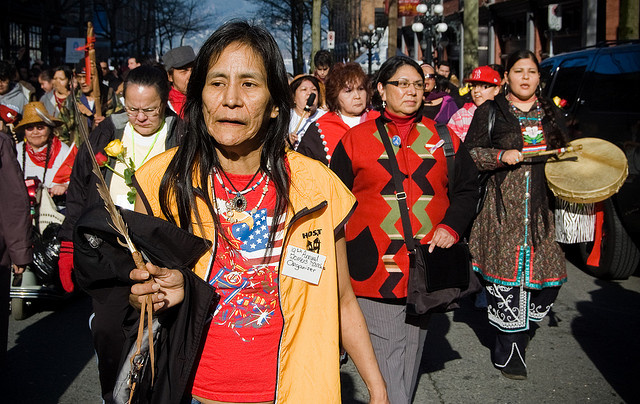
Canada’s federal prisons hold more prisoners than ever before. The provincial prisons are also full to the brim. What’s going on? Crime is on the decline. The White prison population is also in decline.
Last Tuesday, Canada’s Correctional Investigator Howard Sapers issued his annual report. The picture is both grim and not surprising. There’s a `boom’ in prisoners, and it’s made up of people of color. Aboriginal people make up around 4 per cent of the population, and close to 25% of the Federal prison population.
Black prisoners are “over-represented”, especially in maximum-security prisons. Black prisoners are also “over-represented” in solitary confinement. Black prisoners disproportionately face the “use of force” from guards. Black prisoners also face discrimination in prison jobs employment and in parole release.
Meanwhile, the prison staff remains overwhelmingly White. The Fear of a Black Planet continues to this day. To no one’s surprise.
For women in the system, the rates of incarceration far exceed those of men. Since 2003, the female prison population increased by over 60%. One in three women the federal prison system is Aboriginal. Since 2003, the Aboriginal women’s federal prison population has increased by 83.7%
Why are Aboriginal women being imprisoned at such high, and higher, rates? What happens to Aboriginal women when they enter into the prison system?
“In September 2012, an independent review commissioned by the Department of Public Safety entitled Marginalized: The Aboriginal Women’s Experience in Federal Corrections was released. The external report examined the reasons behind the over-representation of Aboriginal women in federal penitentiaries, revealing a depressing picture of dislocation, isolation, violence, poverty, victimization and discrimination. It examines several themes that are consistent with the Office’s own findings and recommendations in this area of corrections: over-classification of Aboriginal women inmates; high prison self-injury rates among Aboriginal women; lack of culturally appropriate programming; and limited use of CCRA [Corrections and Conditional Release Act] provisions to share care and custody of Aboriginal offenders with Aboriginal communities.”
Aboriginal women are “over-represented” in solitary and maximum security. Force is used on Aboriginal women prisoners at an extraordinarily high rate. But the highest rate is that of self harm. From 2011 to 2012 Aboriginal women accounted for almost 75% of self-injuries among women prisoners. More often than not, self-injury results in charges being filed, solitary confinement, and security reclassification. If an Aboriginal woman hurts herself, it’s a crime. Instead of help, counseling, anything supportive, she’s sent into the hole.
Correctional Investigator Howard Sapers concluded, “You cannot reasonably claim to have a just society with incarceration rates like these.” Public Safety Minister Steven Blaney replied, “The only minority I would say we are interested in are the criminals.”
(Photo Credit: flickr / Vice)